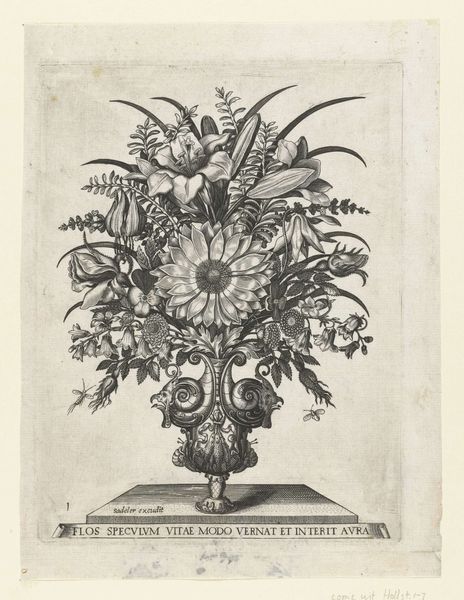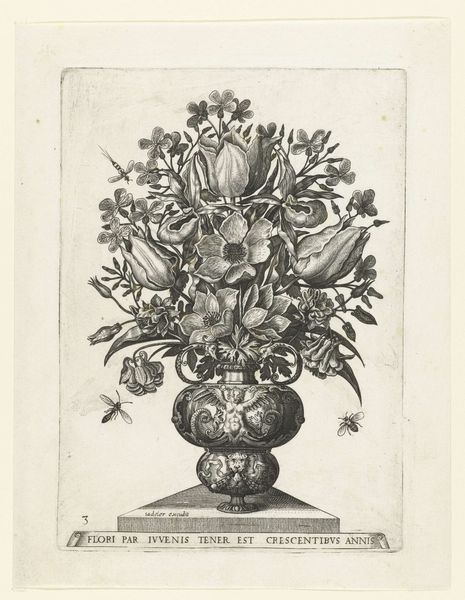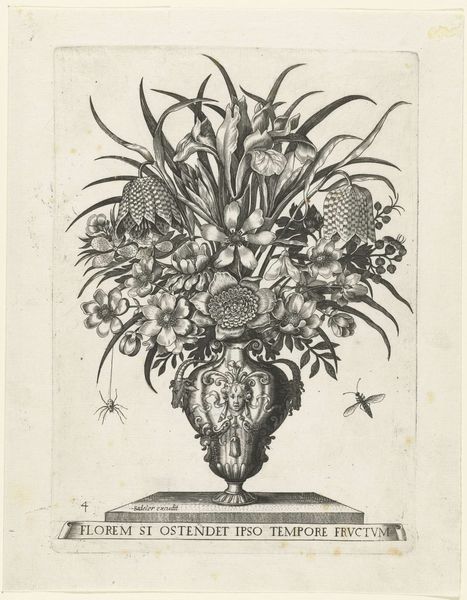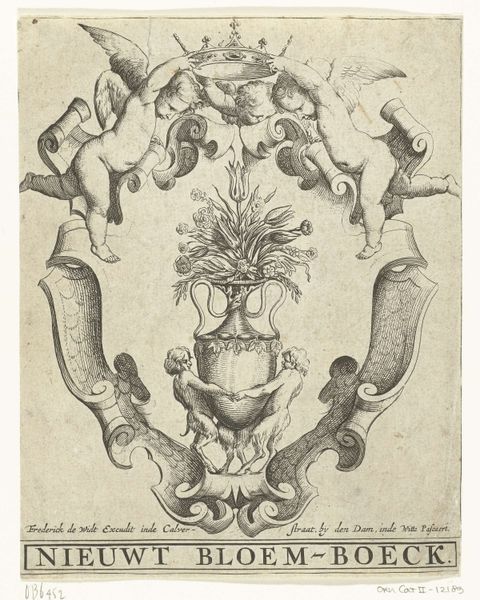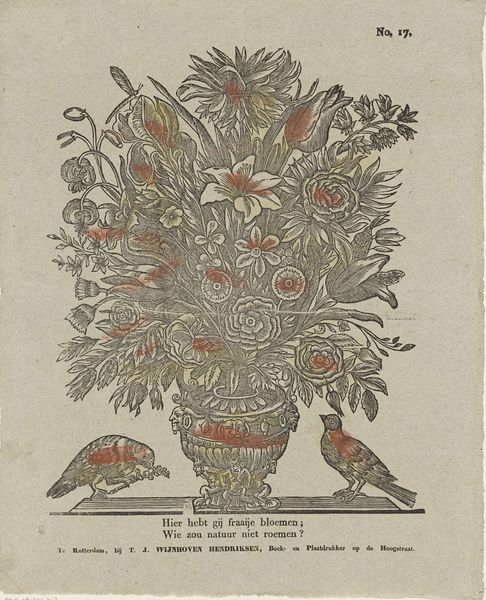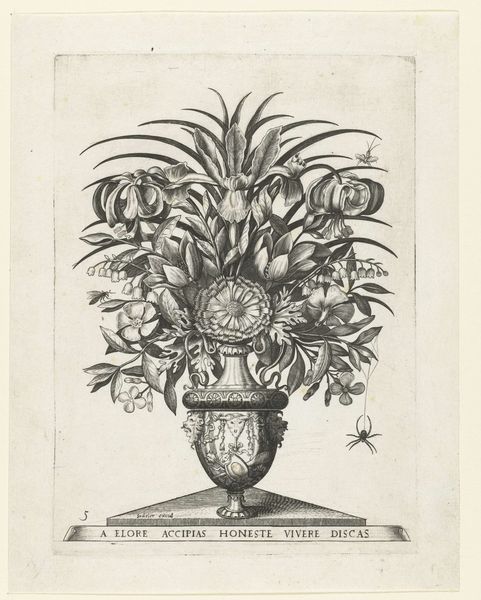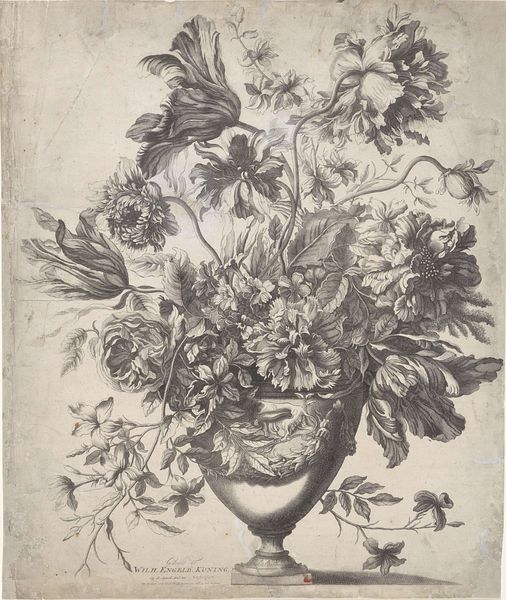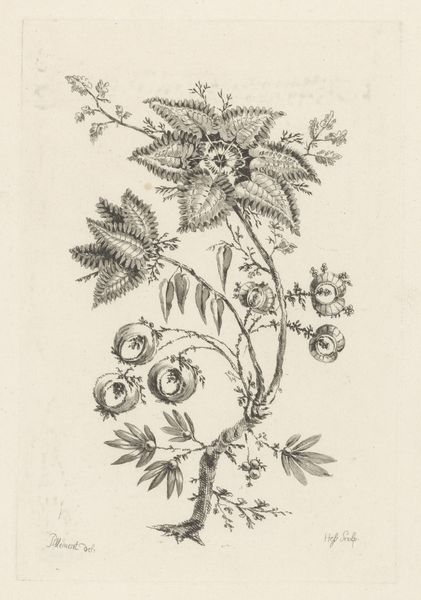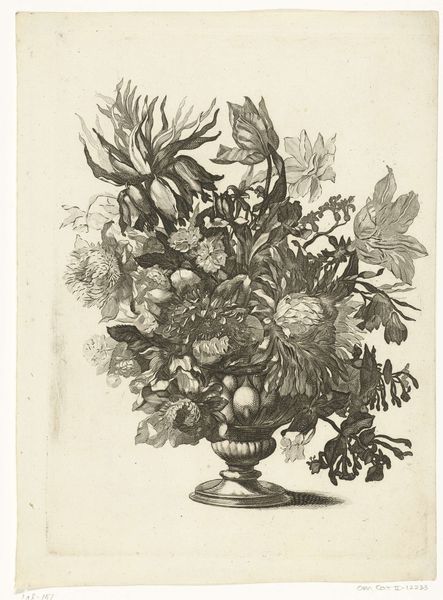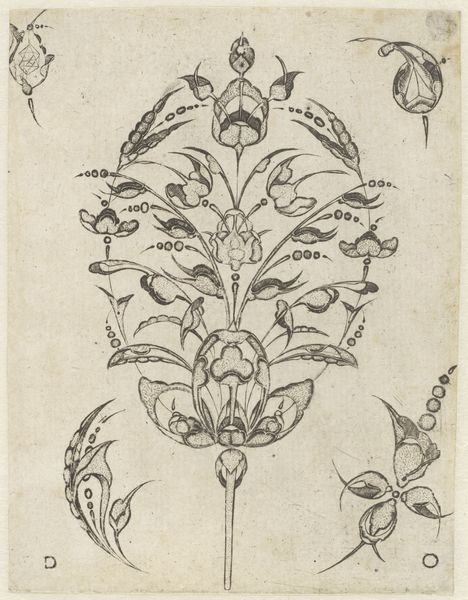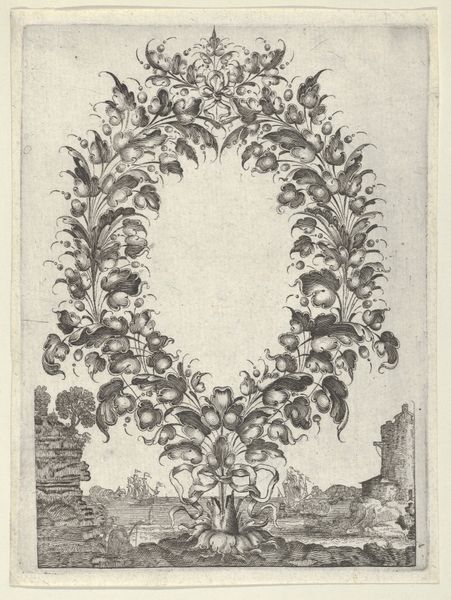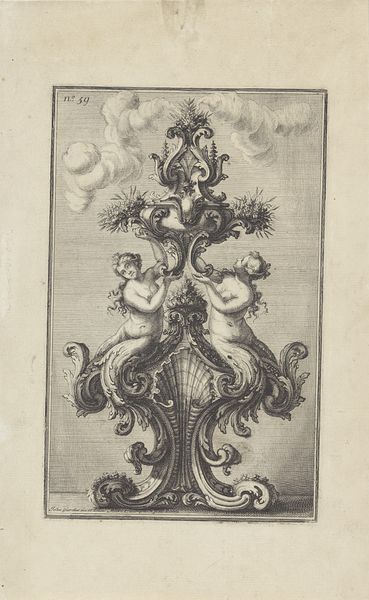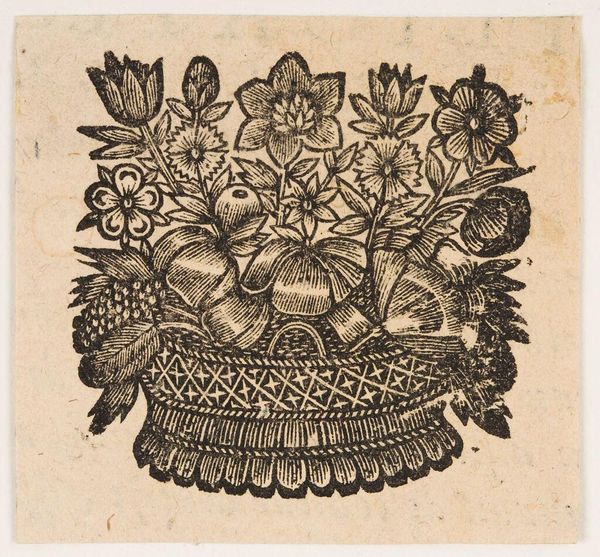
print, engraving
# print
#
old engraving style
#
mannerism
#
form
#
pen-ink sketch
#
line
#
engraving
Dimensions: height 190 mm, width 145 mm
Copyright: Rijks Museum: Open Domain
Editor: Here we have an engraving from somewhere between 1500 and 1600 called "Groteske vaas met drie mascarons," or Grotesque vase with three masks, by an anonymous artist. The detail is incredible, particularly on the vase itself! I find the whole thing slightly unsettling, though. How do you interpret this work? Curator: The grotesque, with its combination of the beautiful and the monstrous, was a popular motif during this period. How might we view its popularlity in the art market and socio-political life of the time? The printmaking medium itself facilitated the dissemination of such images and ideas across a wider audience. The printing press amplified the distribution of ideas. This vase isn’t merely decorative; it actively *performs* meaning through those grotesque faces and floral symbols, like memento mori. Editor: Memento mori, a reminder of death, okay. So the flowers are like a symbol of mortality here? Curator: Exactly. And think about the Latin inscription at the bottom, “O flos sic vernans iuvenili aetate pudorem” -- “O flower thus blooming, modesty of youthful age.” This connects the fleeting beauty of youth to the ephemeral nature of the flowers. So it's a complex reflection on morality but within a socio-cultural landscape of a powerful church and state apparatus. Editor: The snail and the fly seem like they would play into this idea, too, right? Curator: Precisely. Details like the snail and the fly, so meticulously rendered, might refer to decay and the passage of time. Do you see how they're not merely aesthetic choices, but are potent symbols speaking to the era's understanding of life and death? It shows the impact the Church had at the time, doesn’t it? Editor: It definitely makes you think about the fleeting nature of beauty. The vase makes sense, now that you mention that everything is connected. The more people saw and discussed these prints, the more influential the artwork would become. Curator: Indeed, this engraving invites us to consider the intricate connections between artistic production, the dissemination of ideas, and socio-political ideologies, reminding us of art's vital role in shaping societal perceptions. Editor: I’ll definitely never look at floral art the same way again! Thanks for unpacking this piece with me!
Comments
No comments
Be the first to comment and join the conversation on the ultimate creative platform.
